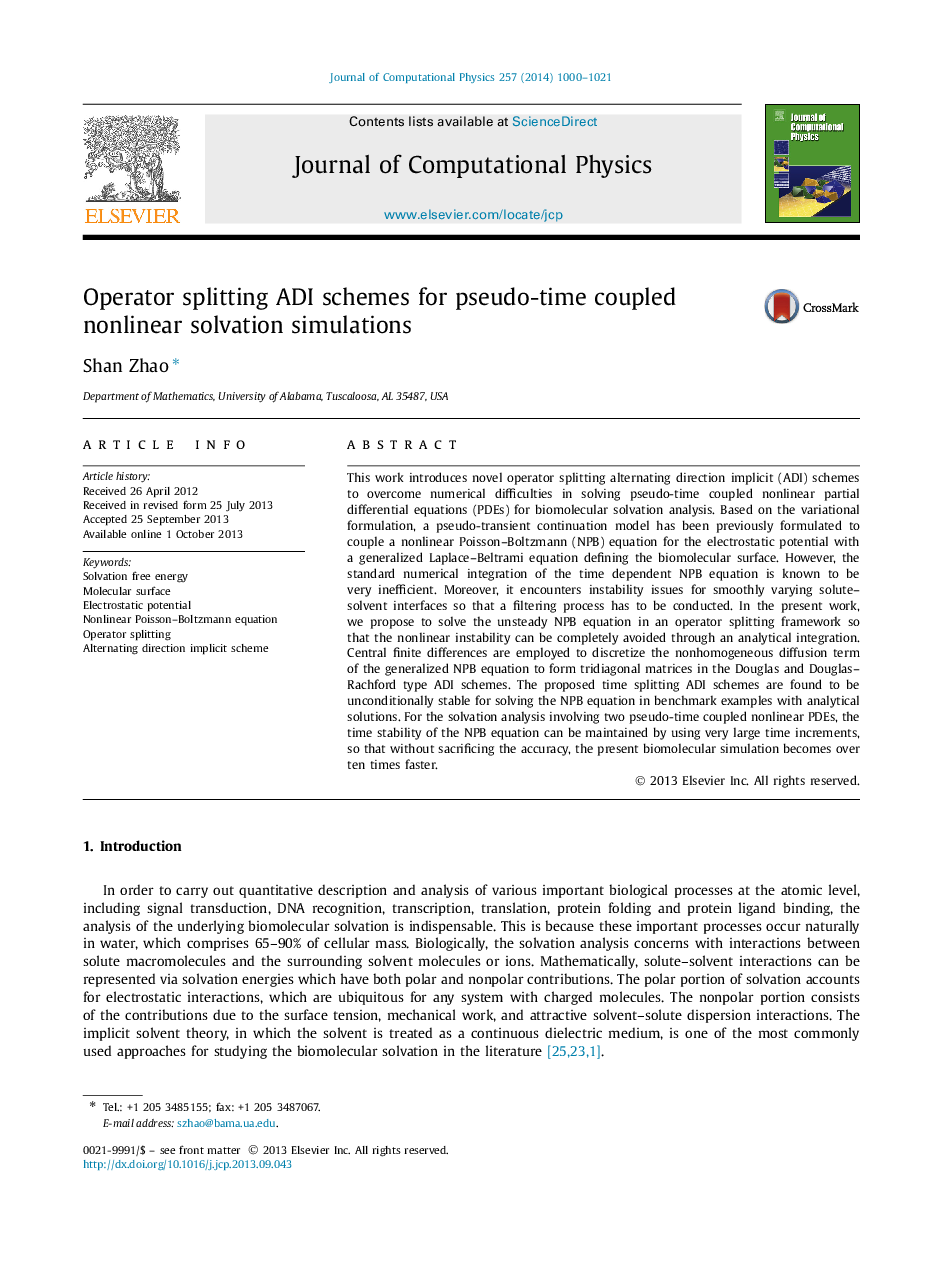| Article ID | Journal | Published Year | Pages | File Type |
|---|---|---|---|---|
| 10356036 | Journal of Computational Physics | 2014 | 22 Pages |
Abstract
This work introduces novel operator splitting alternating direction implicit (ADI) schemes to overcome numerical difficulties in solving pseudo-time coupled nonlinear partial differential equations (PDEs) for biomolecular solvation analysis. Based on the variational formulation, a pseudo-transient continuation model has been previously formulated to couple a nonlinear Poisson-Boltzmann (NPB) equation for the electrostatic potential with a generalized Laplace-Beltrami equation defining the biomolecular surface. However, the standard numerical integration of the time dependent NPB equation is known to be very inefficient. Moreover, it encounters instability issues for smoothly varying solute-solvent interfaces so that a filtering process has to be conducted. In the present work, we propose to solve the unsteady NPB equation in an operator splitting framework so that the nonlinear instability can be completely avoided through an analytical integration. Central finite differences are employed to discretize the nonhomogeneous diffusion term of the generalized NPB equation to form tridiagonal matrices in the Douglas and Douglas-Rachford type ADI schemes. The proposed time splitting ADI schemes are found to be unconditionally stable for solving the NPB equation in benchmark examples with analytical solutions. For the solvation analysis involving two pseudo-time coupled nonlinear PDEs, the time stability of the NPB equation can be maintained by using very large time increments, so that without sacrificing the accuracy, the present biomolecular simulation becomes over ten times faster.
Related Topics
Physical Sciences and Engineering
Computer Science
Computer Science Applications
Authors
Shan Zhao,
